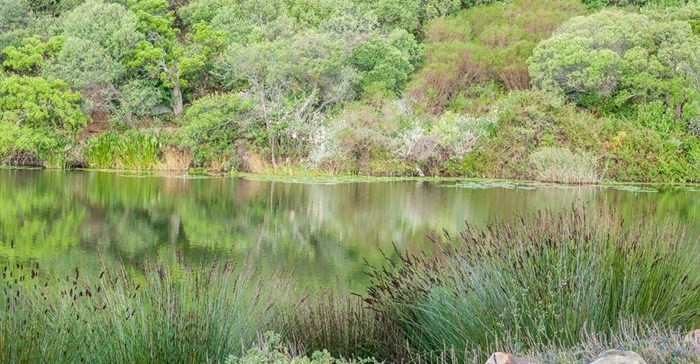
Top stories






More news

















The importance of fire in sustaining and enhancing biodiversity in fynbos and many other ecosystems has long been known, but the cycle of regeneration is being negatively impacted by climate change.
The 44-year study of permanently marked vegetation plots in the Cape of Good Hope Section of Table Mountain National Park — one of the most botanically diverse regions of the world — was led by the South African Environmental Observation Network (SAEON) in collaboration with researchers from three South African universities and four US institutions.
They found that species diversity has declined due to increasingly prolonged spells of hot, dry weather in the first year after fire, impacting particularly those species that sprout after fire. Furthermore, the species unique to each survey have shown a 0.5°C increase in maximum temperature tolerance - species that have low tolerance of high maximum temperatures have been disappearing, while those that have been colonising plots have a higher maximum temperature tolerance - suggesting that species are tracking shifting climate. The observed increase in temperatures and extreme weather patterns over the past half-century suggests that opportunities for successful regeneration of vegetation will become increasingly rare.
While attributing biotic responses to climate change is typically very difficult, there is high confidence in this study’s findings, because it explored multiple potential drivers of change. Over and above the impact of climate, the study found a legacy impact of a history of invasion by alien plants, which were common in the reserve until the mid-1980s.
“The increasing bottleneck that extreme weather places on the post-fire regeneration phase may compromise the stability of plant populations,” noted Jasper Slingsby, biodiversity scientist at SAEON and research associate at the University of Cape Town’s Statistics in Ecology, the Environment and Conservation group and Department of Biological Sciences. “Climatic variability may continue to provide years sufficiently benign to allow successful recruitment, but many species in ecosystems that regenerate in the first year after a fire event – most species in our study – are subject to a form of climactic Russian roulette. Unfortunately, as climate change intensifies, there are fewer empty chambers in the gun.”
The exacerbation of post-fire mortality by increasingly severe weather extremes is likely to drive major shifts in the composition, and hence, structure and function of fire-prone ecosystems, according to the researchers. This is a concern for summer-dry, fire-prone ecosystems around the world, including much of the Mediterranean Basin, the Fynbos and Renosterveld of South Africa, South Western Australia, California, and forests along the Western United States; most of which are Global Biodiversity Hotspots, and all have experienced large numbers of fires and extreme drought and heat in the past few years.
The study, titled Intensifying postfire weather and biological invasion drive species loss in a Mediterranean-type biodiversity hotspot, represents one of the few examples of climate-drive diversity loss in natural communities and demonstrates an important interaction between climate change and disturbance by fire that suggests flammable ecosystems may be particularly sensitive to climate change.
The only other empirical evidence of a climate change impact on fynbos species is a paper published by UCT authors last year.
The research was supported by the National Research Foundation of South Africa, the National Science Foundation (USA), and the National Aeronautics and Space Administration (NASA, USA) and enabled by South African National Parks.
In addition to Slingsby, researchers include John Silander and Hayley Kilroy Mollmann of the University of Connecticut, Nicky Allsopp of the South African Environmental Observation Network, Cory Merow of Yale University, Matthew Aiello-Lammens of Pace University, NY, Stuart Hall of Stellenbosch University, Ross Turner of the University of KwaZulu-Natal, and Adam Wilson of University at Buffalo, NY.